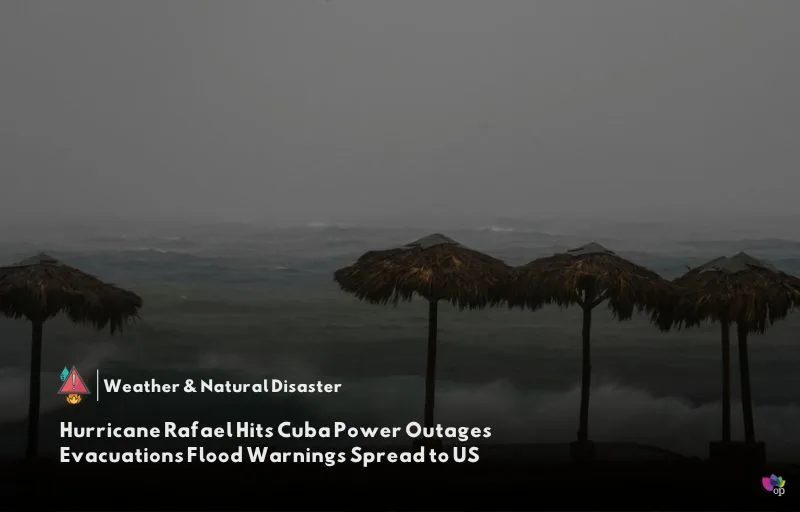According to the reports on Thursday (7 November), Hurricane Rafael landed in Cuba as a Category 3 storm, hitting the province of Artemisa and sweeping across the island, leading to widespread power outages and damage. By evening, the storm had weakened to a Category 2 but continued to bring heavy rains, strong winds, and dangerous conditions across the western part of the country. With maximum sustained winds initially at 115 mph, Rafael left Cuba grappling with severe flooding, uprooted trees, and darkened streets in Havana as it moved northwest.
In anticipation of the storm, Cuban authorities suspended flights, public transport, and classes in affected areas, evacuating thousands of residents from vulnerable locations. As Rafael approached, the U.S. State Department advised American citizens to reconsider travel to Cuba and arranged departure flights for non-essential staff. The Cuban Civil Defense had urged people to prepare early, leading to widespread evacuations, especially in western Cuba’s coastal and low-lying regions.
Before hitting Cuba, Rafael caused extensive damage in the Cayman Islands and Jamaica, knocking out power, blocking roads, and triggering landslides. Jamaican authorities reported widespread power outages and severe flooding, while crews in Little Cayman and Cayman Brac began assessing damage. Although conditions improved in Grand Cayman, officials warned of persistent risks from residual flooding and rough seas.
Moving toward the Gulf of Mexico, Rafael is expected to weaken gradually, but it still poses a risk to Florida and other areas in the southeast U.S. The National Hurricane Center has warned of storm surges along the Florida Keys and Dry Tortugas, with possible tornadoes and heavy rain in southwestern Florida. With Rafael marking the 17th named storm of a particularly active season, forecasters expect above-average hurricane activity this year, adding to the already challenging recovery for many affected regions.
References


